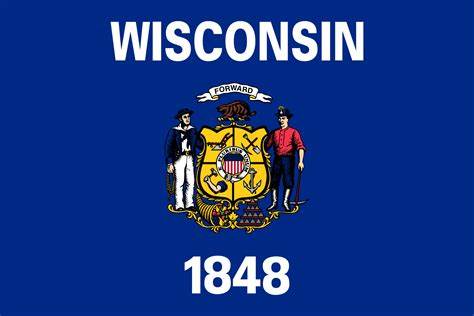
History of Wisconsin and its Capitol
By: Ayden Ruppel
With a rich history spanning almost two centuries, Wisconsin was an early settlement in America, first entered by Jean Nicolet, a French explorer, likely the first European to step foot in the area. While Wisconsin was the thirtieth of fifty states to be established in America (Founded May. 29, 1848), nearly three hundred and fifty-six years after the “New World’s” discovery by Christopher Columbus, Nicolet had entered Wisconsin only one hundred and forty-two years after Columbus first set foot in America. While this may seem like a very long time ago it is nothing compared to Native American origins in Wisconsin, often overshadowed by European settlers it is important to know that Native hunters first populated Wisconsin more than 14,000 years ago.
The cultivation of farmland in Wisconsin began 2,000 years ago with the first farmers being a group of Natives known as the Hopewell people. Later tribes included the Chippewa, Ho-Chunk, and Oneida, now centuries later the Oneida and other tribes are still thriving and full of tradition. The Oneida began migrating to Wisconsin from their origin in New York in 1821 to establish a new homeland, the Oneida reservation now totals only 65,400 acres of land, 1.308% of their original five million acres. A large part of Wisconsin’s history was fur traders and dairy farming, according to the Wisconsin Blue Book “Pierre-Esprit Radisson and Médart Chouart des Groseilliers became the first known fur traders in Wisconsin”. Then in the late 1880s dairy farming surpassed wheat in primary agricultural activity.
The capital of Wisconsin was decided to be Madison in 1836 when the first session of the Wisconsin legislature was held. While the capital was ultimately decided to stand in Madison, it was suggested to be in Belmont, a town located in the very southwest corner of Wisconsin. Belmont is a tiny town in comparison to Madison with Belmont’s population of 1,009 people(s) and Madison’s 269 thousand as of 2021, to put that into perspective, that means Belmont has a mere 0.4% of Madison’s population. Madison is a great economic support in Wisconsin not just because of tourism but because of establishments such as UW-Madison. UW-Madison is a university holding a multitude of advanced courses, through this they contribute an estimated 30 billion dollars annually to the state of Wisconsin in the act of creating jobs and opportunities for students.
The capital began construction in 1837 with a wooden frame made of oak trees harvested from Gilman Street, only 2,000ft (659 meters) away from the capital. On the other hand, the stone used to build most of the structure was transported 3 miles from Maple Bluff and over Lake Mendota by fairy. But disaster struck when just 68 years after being built a large section of the capital’s interior was damaged by a fire. After this event, a larger and improved version of the capital was built during the span of 11 years (1906-1917). The construction of the capital was prolonged due to financial limitations and when completed cost 7.2 million dollars. The specific rock used to build the capital was white Vermont granite. This form of granite quote “compares to marble in whiteness and is the hardest and most durable in the building” according to WisconsinStateCapitalTour.gov.
Sources
(2017, March 9). The Official Website of the Wisconsin State Capitol. https://capitol100th.wisconsin.gov/